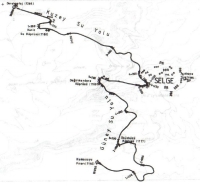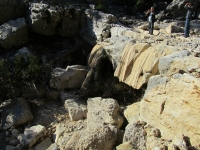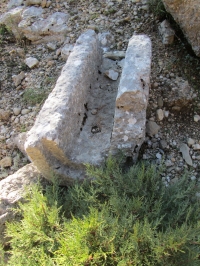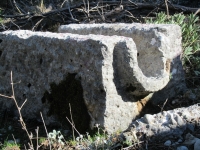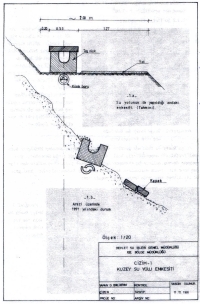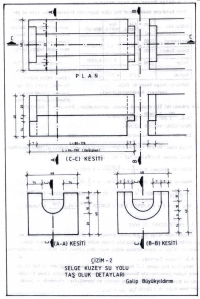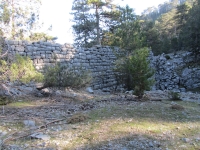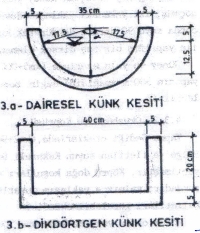
Roman bridges over the Eurymedon
Near the fork off the road to Beskonak, 10km east of Aspendos, a long Seljuk hump-back bridge with Roman foundations crosses the Eurymedon / Köprülü river, see the entry Aspendos.About 46km further north behind the village of Alabalik near Beskonak, the river narrows, marking the point where the mountainous and impressive Köprülü Kanyon National Park begins. Behind some small fish restaurants a track leads off to Selge (within the park) across a Roman bridge Oluk Kopru which spans the Eurymedon / Köprülü gorge (see photo left). The length of the bridge is 22m, the width between the parapets 2,70m and the height of the arch above the river is 35m.
Remains of an ancient cobbled road can be found on the road from here to Selge.
After you crossed the bridge and followed the road for another 300 meter downstream, you can discover another bridge, from Byzantine period, over a side branche of the Köprülü river (photo right).




